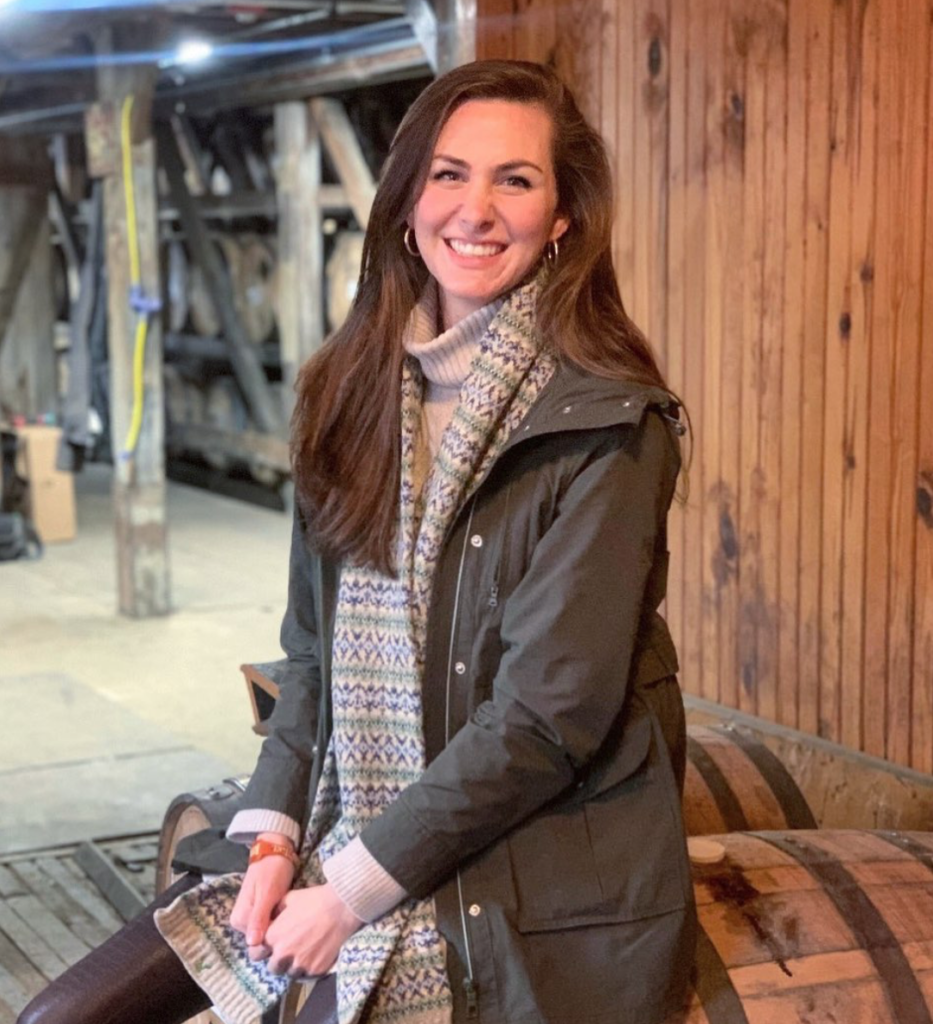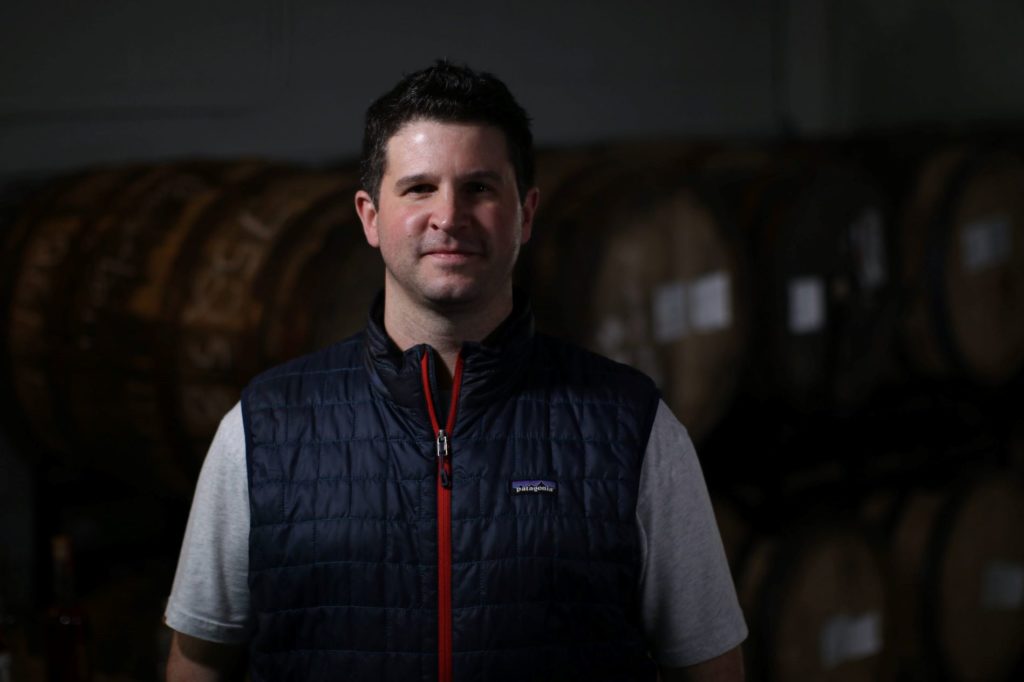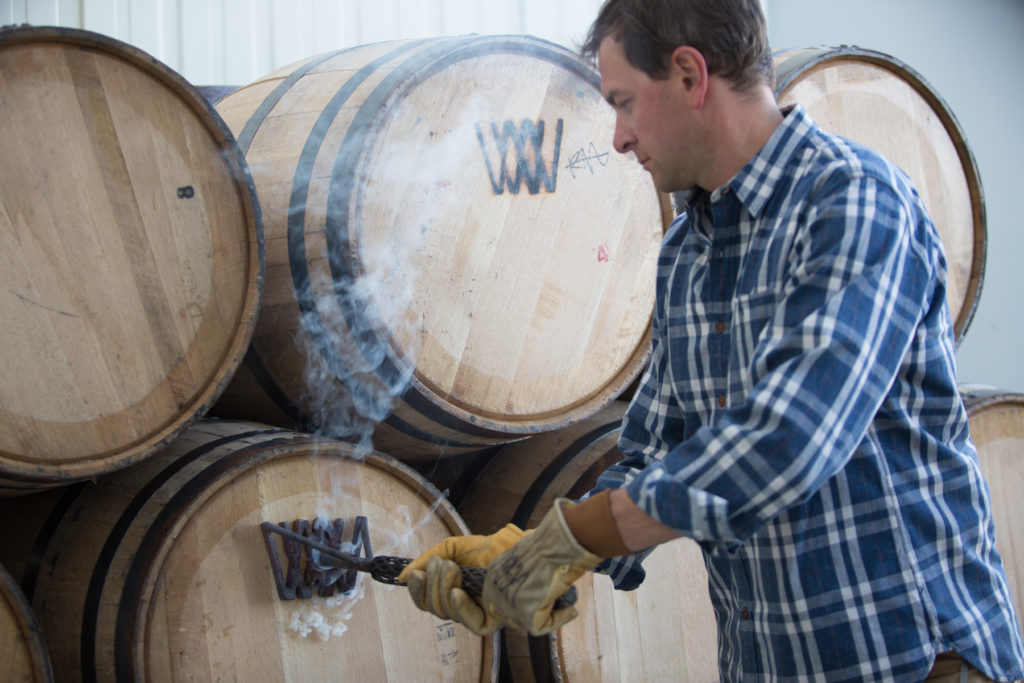Numerous trends in American whiskey have emerged during the pandemic. Perhaps most important was consumers sheltering at home, who had more time to research and explore through everything this category has to offer. Suddenly, everybody has become a bourbon aficionado.
Our thirst for whiskey has spiked to historic highs. But how long will this new golden age continue? And what does this elevated consumer enthusiasm portend for the rest of 2022 and into 2023? Here’s a look at some of the trends driving the American whiskey category.
1) Single Barrel Picks
Perhaps the hottest trend in whiskey is single barrel picks. These give clubs, influencers and retail stores the ability to buy and bottle their own juice. Consumers and fans flock to these picks, which often came waxed and dressed in a silly sticker.
“We’re doing more single barrel picks now than before Covid,” says Woodford Reserve Master Distiller Chris Morris. “This program provides high-quality whiskey with an aspect of personalization and uniqueness to it.”
That uniqueness is key in a time when finding and buying the trendiest brand-name whiskeys has never been harder. Good luck getting anything Buffalo Trace these days. If you cannot acquire these kinds of “unicorns” or “taters,” but still want something unique, then single barrel picks are an easy-to-find special bottle for your collection.
After all, these are rarer than any allocated product. Coming from a single barrel, they’re one-of-one, never repeated. And you do not have to break the bank.
Advertisement


“They’re a great way for retailers like us to show off our palates,” says Caroline Paulus, whiskey historian at Justins’ House of Bourbon, and senior editor of The Bourbon Review. Justins’ House of Bourbon is among the leading retailers of whiskey picks in the country. “And usually these picks are reasonably priced, and something different to drink.”
“Every single time, these are bourbons you’ve never had before,” she adds. “And that’s what many consumers want these days.”
2) ‘Sourced Whiskey’ is Sought After
Not long ago, words like “sourced” and “MGP” were vulgar terms and looked down upon in whiskey culture. Not anymore. In a 180-degree turn, consumers now hunt down brands that source good whiskey. People now know that “MGP” and other sourcing houses mean “quality,” which in turn has fueled a rise in new brands.
“Sourced whiskey is a necessity for young brands,” says Mike Montgomery, CEO/cofounder of Blue Run Spirits, which launched in 2020 with several sourced offerings. “It fills a void while the distillate we’re distilling becomes mature.”
. “It fills a void while the distillate we’re distilling becomes mature.”
Handled properly with transparency and creativity, sourced whiskey has proven a popular product.
“There are creative approaches that companies like Blue Run can take on sourced whiskey that the distilleries themselves might not,” Montgomery says. “For instance, we launched a 13-year sourced bourbon at 113 proof. You’d be hard-pressed to find a distiller proofing those bottles anywhere above 95 proof.”
A big part of the backlash against sourced brands years ago was a distaste for any dishonesty about where the product was distilled. Modern brands now know better.


“We’ll be as transparent as we can legally be,” says Montgomery. “We can’t disclose the exact distillery it came from, or sometimes even the mash bill.” But on its most recent release, Blue Run could disclose the mash bill. “That was a first for us.”
Penelope Bourbon, based in Roselle, NJ, is another fast-emerging sourced brand, one with transparency at the heart of its operations.
“We only work with MGP, and they’re great partners and mentors,” says Penelope CEO/cofounder Michael Paladini. “We’ve got nothing to hide. These people make great whiskey. We look at this as an advantage, not a negative.”
Like Blue Run, Penelope is creative with products they source. “We always wanted to be viewed as blenders,” Paladini explains. “We’ve tried to put our own spin on what we’re doing with the MGP juice. When you can take good juice and give it a unique profile, that’s how you build a strong brand.”
3) Barrel Finishes Pick Up
With so much demand for American whiskey, brands have expanded their lines through barrel finishing. These different takes on a distillery’s core products provide what consumers crave most: variety.
But many distillers and blenders urge caution about over-innovation through finishing. You can risk turning away customers with too many different options, as happened in craft beer some years ago.
“They’re a lot of fun, barrel finishes, but you can fall down a rabbit hole with that stuff,” says Paladini of Penelope Bourbon. The company’s recent cask finishes include grenache and rosé wine.
“As a company, you’ve got to be different, but there are different scales of that,” Paladini notes. “I think finishes work better as limited releases. If that goes well, then you introduce them as a core expression.”
Echoing his concerns is David DeFazio, cofounder of Wyoming Whiskey.
“What concerns me is the distillery that has not mastered their base product and then use barrel finishing to mask imperfections,” he says. “That does the industry a disservice. A ‘sherry bomb’ finished whiskey that masks mistakes — that’s a Band-Aid. Consumers who pick up that bottle, it’ll make them turn away from the category.”


For distilleries that have already fine-tuned their base spirits, however, DeFazio sees finishes as a natural extension. “Now they’re looking for a barrel that can enhance their product,” he says. “They want to show off a level of sophistication that the distillery has, and a point of differentiation.”
People today seek something different, DeFazio notes. “These distilleries are saying, ‘If you already like our base whiskey, pick up this double barrel release to see what oloroso does to our whiskey’.”
4) Premiumization and Innovation
Barrel finishing and innovation are part of a bigger trend that has fueled the modern whiskey boom from the beginning: premiumization. Consumers are willing to pay up for pricier bottles.
“Customers are telling us that that’s what they want,” says Nicole Austin, general manager and distiller at Cascade Hollow Distilling Co., maker of George Dickel Tennessee Whisky. “People have a taste for affordable luxuries to treat themselves. And something like a nice spirit fits right in that. So I think that part in particular, premiumization, is going to continue to grow.”


“There’s so much diversity growing in the category now,” says Austin. “We’re not just adding same on top of same, but widening the category in a way that I think is going to bring a lot of people into it. So there’s still tons of growth ahead for American whiskey.”
This “treat yourself” mentality has only grown during the challenging years of the pandemic. Affordable luxuries have helped us endure this difficult time.
Premium innovations have also driven growth in the industry. “As a former liquor retailer, we learned first-hand that new products are the lifeblood of retail,” says Jay Erisman cofounder and distiller at New Riff Distilling. “But there’s a difference between truly innovating and just pushing SKUs on retailers. That’s not innovation.”
5) Producer Investments Pay Off
Industry watchers remain bullish on American whiskey, and that’s reflected in the investments suppliers have made to ramp up production.
“I think we’re still in the meat of it,” says DeFazio. “It certainly seems like whiskey — bourbon in particular — has hit the mainstream. Educated consumers and tastemakers led the initial charge. We’re past that stage now. Those initial people have folded in their friends, who have picked it up and liked it and it’s spreading.”
“It also seems that investment from major suppliers has not slowed down,” he adds. “We’ve upped our own production, based on our bullish view of the future.”
To his point, leading distilleries around the country have invested many millions in operations in recent years. Both Buffalo Trace and Woodford Reserve are currently amidst expansions that will double production.
Beyond its new visitor center, Heaven Hill also invested $106 million in production, including new barrel warehousing, a bottling line and equipment upgrades.
The craft side of the industry also sees sunny skies ahead.
“I don’t see any signs of things slowing down,” says Hletko, former president of the Board of Directors for the American Craft Spirits Association. “I think we’re going to continue to grow for a while. We’re still below the high-water mark for whiskey volume in America. That mark was set 50 years ago, and with 50 years of population growth, I think whiskey volume can continue to go up.”
6) Pain In the Glass Shortage
Covid-19 has roiled production and shipping industries worldwide, including American whiskey. Distribution remains disrupted. Perhaps even more threatening to producers is the lingering glass short-
age. Obtaining bottles for product is no simple task.
“The glass shortage is definitely a challenge,” Hletko says. “It’s one of the things we’re going to get over. The marketplace will equalize with time, but there will be short-term pain.”


“Nobody wants to buy extra glass, but you have to now, and that delays everybody else,” he adds. “It’s a non-virtuous cycle. It’s real, and it’s gong to affect product availability and pricing.”
Compounding matters, the costs of buying and shipping glass have risen significantly during the pandemic.
“Suppliers can’t eat all those costs,” Hletko says. “That stuff does have to get passed on.”
Nobody foresees an imminent fix.
“People keep saying that the supply-chain issues could be felt for years, and I do think so, myself,” says Paladini of Penelope. “I think we’re still in the first inning of wild and crazy times.”
To his point, paper labels, cork and other closures all remain in short supply during this time of disruption.
7) Social Media Shapes Whiskey Culture
Influencers on social media already held large sway over consumer sentiment. Now, another growing area of the online ecosystem has gripped whiskey culture.
The size and number of whiskey groups on social media has spiked during the pandemic. People stuck at home and passing time on their phones and computers joined these groups in droves. Across the country, groups for cities, regions or states have doubled, tripled or even quadrupled in membership. Reaching thousands of people in a single group has become common.
“New Jersey is a great showcase,” says Paladini. “Before Covid, Jersey had maybe one bourbon group. By the middle of 2020, I think there were 20 and 30, each with 300-400 members. And the groups continue to explode in numbers.”
Naturally, this affects local whiskey markets. When a bottle becomes trendy in a group, posted by everybody, it disappears from retail shelves. Good luck finding Blanton’s, E.H. Taylor, JD 10 or A Midwinter Night’s Dram. Want a Weller? Wish upon a star.
At the same time, social media has allowed brands to grow faster, and connect personally with consumers unlike ever before.
“We want to get to know and have real interactions with our consumers,” says Montgomery of Blue Run Spirits. “I personally answer people on social media. I’ll include a personal detail. If I see they recently took a trip, I’ll say, ‘I hope you enjoyed your vacation’. We’re trying to be part of the family.”
That family is increasingly comprised of hardcore fans on social media. Savvy brands tap into these collective consumers, as the social media groups grow in size and influence.
8) Whiskey Prices Climb Higher
Follow any of these groups and it’s among the hottest talking points: whiskey prices are going up, up, up, up, up.
Retailers increasingly stock trendier brands for prices that people pay on secondary. On social media, these shops have received the derogatory nickname, “museum.” Enter to see the rare, dusty exhibits — behind glass, and at prices you couldn’t possibly afford — and then exit the museum. (But someone must be buying, right?)
These “museums” now skip the middleman, the lifeblood of the secondary market: the flipper.
In defense of flippers: It should come as no surprise that whiskey has developed a robust secondary market. Wine has had one for a long time. Same with countless other hobbies with high-end, limited products. such as cars, knives, watches, Pokémon cards.
Big demand with limited supply means that sought-after items naturally rise in price. And people look to profit.
Yes, it’s unfortunate that the secondary market prices more people out of obtaining trendy bottles. But this is not a sign of a broken system. Much the opposite, a big secondary market indicates that whiskey is flourishing.”
“Some Scotch bottles can fetch $50,000,” says Paulus of Justins’ House of Bourbon. “With bourbon, only a few brands can fetch those prices right now.
Looking at MSRP alone, she says, “bourbon is still so far behind the rest of the world. I’d like to see more bourbons valuing themselves at what I think bourbon is worth.”
A lot has changed, Paulus notes. “Paying $3,000 for a whiskey was inconceivable 20 years ago, when there were only nine distilleries in Kentucky, struggling to stay afloat.”
And yet, not all whiskey is highly priced.
“It’s real mixed depending on where you are,” says Austin of Dickel. “You’re seeing rising prices on some whiskeys. That’s us as consumers of high-end whiskeys looking at it narrowly. In the category in general, there’s still a lot of affordable whiskeys out there.”
“That’s something I personally take pride in, trying to provide whiskey at a fair price,” she adds. “Of course, I don’t control what happens at retail. And I definitely don’t control what happens in the secondary market. So I think regardless of my thoughts on the subject, they’re all going to go on and continue to do what they do.”
Add in continued disruption of shipping and production, and whiskey prices will almost certainly head higher in 2022. Some retailers may still stock trendy bottles at or near SRP, but these “honey holes” are drying up fast.
That’s because the product is amazing, everybody wants it and there isn’t enough. The quality of American whiskey has never been better — and consumer demand never greater — with no end in sight. Long live the modern golden age of American whiskey.


































